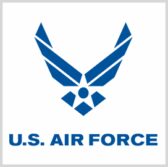 The U.S. Air Force has issued a flight plan that outlines what technologies the service must focus on through 2030 in order to help maintain U.S. air superiority and counter threats.
The U.S. Air Force has issued a flight plan that outlines what technologies the service must focus on through 2030 in order to help maintain U.S. air superiority and counter threats.
The Air Superiority 2030 Flight Plan calls for the agile development of integrated systems that work across the air, space and cyberspace domains, the Air Force said Tuesday.
“We need to develop coordinated solutions that bring air, space, cyber, the electronic environment and surface capabilities together to solve our problems,†said Lt. Gen. Mike Holmes, the Air Force Deputy Chief of Staff for Strategic Plans and Requirements.
Air Force operators, acquirers and analysts collaborated to formulate the plan released May 26.
The plan recommends blending agile processes with coordination between science and technology, acquisition, requirements and industry professionals.
Col. Alexus Grynkewich, the Air Superiority 2030 ECCT lead, said the transition from what he describes as “industrial age mindsets to information age mindsets†requires “parallel development of maturing technologies for sensors, missions systems, lethality and non-kinetic effects, on appropriate time cycles, of an integrated and networked family of capabilities.â€




